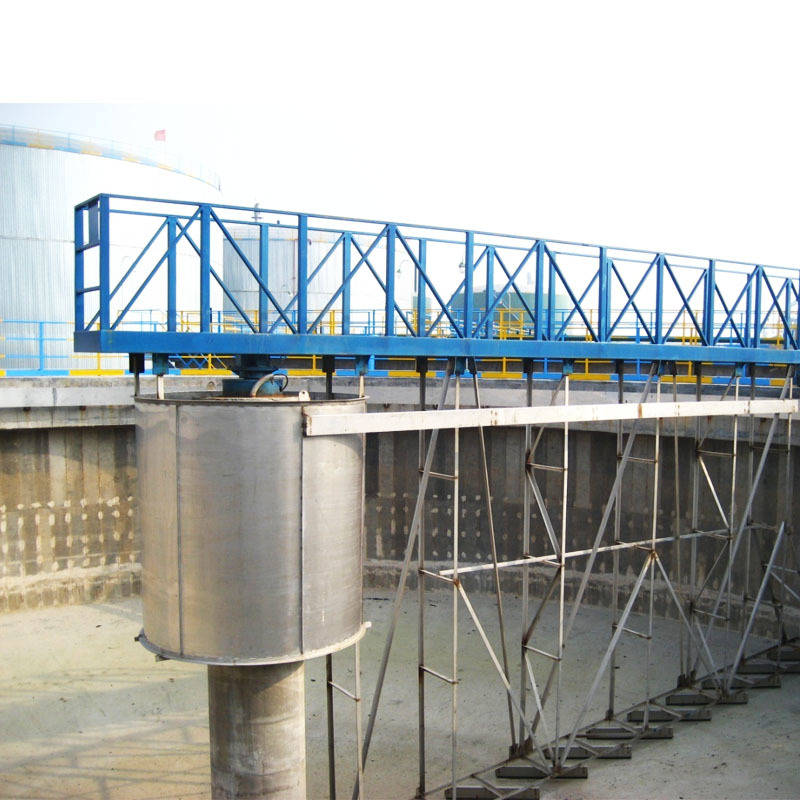There are a variety of wastewater treatment systems in different forms available for wastewater treatment plants to choose from. Among these systems, the DAF (Dissolved Air Flotation) System, Water Oil Separator System, Aerobic Treatment System, and Induced Gas Flotation System are the most commonly used ones. The individual wastewater treatment system works in different ways and is designed for different purposes. This blog will introduce respectively these four systems and tell you some broad differences among them.
Dissolved Air Flotation System for Wastewater Treatment Plants
The first wastewater treatment system we will introduce is the dissolved air flotation system, which is also known as DAF water treatment system. The dissolved air flotation equipment is widely used in wastewater treatment plants. In fact, since 2000, DAF wastewater treatment has been used in more than 50 water treatment plants in North America. These plants have capacities ranging from 0.5 MGD to 290 MGD.
Dissolved air flotation equipment manufacturers provide a system that includes a flotation cell, a circulating pump that draws circulating water from the sewage, and a blower that fills the circulating water with air. How does this wastewater treatment system work? The feed water flows into the flotation cell, and the wastewater flows out of the flotation cell. Circulating water is recovered from the wastewater and pumped into a blower. As the circulating water enters the air drum, compressed air is introduced into the circulating water. The air drum is pressurized, which forces the compressed air to dissolve into the circulating water. The circulating water is returned to the flotation tank, and the pressure in the float tank decreases, causing the dissolved air to be released from the circulating water. The air bubbles will adhere to the solid particles in the water in the flotation tank and be brought to the surface to form a bubble layer, which is then separated from the wastewater by a skimmer or a thin-layer clarifier.

Water Oil Separator System for Wastewater Treatment Plants
The second wastewater treatment system for wastewater treatment plants we will talk about is the water oil separator system. A water oil separator system includes a separator. The separator has an inlet and an outlet that are separated by a certain distance for material circulation. When water flows from the inlet to the outlet, the oil will float upward and the solid will settle downward. The oil is skimmed from the surface whilst sludge shaped from solids is scraped from the bottom of the separator.
The main difference between a dissolved gas flotation system and a water-oil separator system is that no dissolved air is used to assist the separation in the water-oil separator system. Instead, a water-oil separator system is based solely on Stokes' Law to extend a sufficient dwell time at the separator for its oil, water, and solids to separate.
Aerobic Treatment System for Wastewater Treatment Plants
The third common wastewater treatment system for wastewater treatment plants is the aerobic treatment system. An aerobic treatment system contains 4 stages: a pretreatment stage, an aeration stage, a sedimentation stage and a disinfection stage. The aeration phase, during which the air is introduced, is most similar to the DAF wastewater system. During the aeration stage, biomass digests biological waste from wastewater. Biomass must be exposed to the air because the digestive process is an aerobic process and the aerobic environment enables the biomass to flourish.
The main difference between systems offered by and dissolved air flotation producers and aerobic treatment producers is the purpose of introducing air into the wastewater. In dissolved air flotation systems, air is introduced to float solids to the surface, while in aerobic treatment systems, the air is introduced to help biomass digest biological waste in wastewater.
Induced Gas Flotation System for Wastewater Treatment Plants
The last one is the induced gas flotation system. This kind of wastewater treatment system can also be widely seen in wastewater treatment plants. An induced air flotation system contains mechanical devices, such as impellers, to generate air bubbles in the wastewater within the separator. And air bubbles attach to suspended solids in the wastewater, causing them to float on the surface to form a foam layer.
Although the wastewater treatment system offered by induced gas flotation producers and the system offered by dissolved flotation producers seem similar, they are different in fact. On the one hand, the air introduced in the induced air flotation system is only mixed with the wastewater, while the air introduced in the DAF water treatment system is dissolved in the circulating water and then introduced into the wastewater. On the other hand, the air introduced into the induced air flotation system is at ambient pressure while the air introduced into the dissolved air flotation system is pressurized.
In summary, many different water treatment systems introduce air into wastewater. However, these systems differ in how the air is introduced and how the air is used in the process.
That is our brief introduction to the wastewater treatment system for wastewater treatment plants. If you still have some questions, Jinwantong’s experts can answer them for you. If you are interested in one or more of these systems, Jinwantong can also provide for you. Contact us at https://www.chinaclarifier.com/

